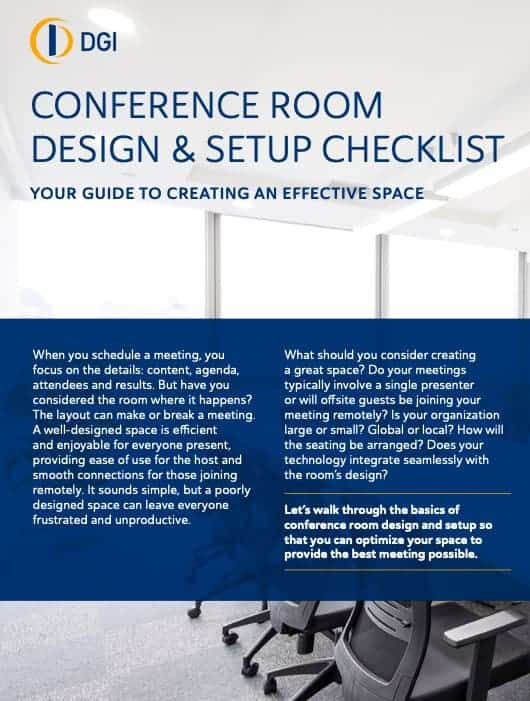In situations when a project is more involved, has a longer duration, or comes with high stakes, booking different conference rooms for one-off meetings or collaboration sessions won’t suffice. For these types of projects, teams typically need a dedicated work area that promotes productive and efficient discussion and decision-making.
Aptly named, war rooms get their name from the types of windowless basement enclaves that have served as wartime headquarters throughout history (such as the one that Winston Churchill led from during WWII). In today’s office-focused iteration, these spaces are reserved exclusively for a given project and enable teams to track progress efficiently by providing an environment that’s conducive to standing, chatting, pinning up sticky notes, ensuring online participants stay connected and deciding on next steps.
A war room benefits any organization that coordinates and handles challenging tasks or situations related to project management, product development, marketing planning and crisis management, to name a few. And if you’re looking for ideas on how to set one up, you’ve come to the right place. Here, we’ll explore the benefits of a war room and go over design concepts to make your space productive.
Benefits of War Rooms in Office Spaces
Thinking about adding war rooms to your workplace? Here’s why it’s a good idea:
Better Continuity
Whether your team is putting sticky notes up on the wall during a brainstorming session or making updates to a schematic that’s displayed on a whiteboard, it’s always preferable to perform these exercises in a space where work can be left long-term without needing to be taken down.
More Opportunities for Collaboration
Whiteboards and notepads are great to have for team members who are physically present in the room. But what about remote employees? Smart displays and conferencing technology make it possible for those working from home to participate in working sessions.
Increased Shared Understanding
War rooms offer the perfect environment for accommodating long-term initiatives. These spaces are where teams can have meetings, brainstorming sessions and informal presentations all related to a single overarching project. When you have a room where it’s safe to post decisions and progress on the wall, you won’t have to worry about whether everyone is on the same page.
Better Monitoring
Including displays and dashboards in your war room design makes it easy to keep stakeholders updated on project statuses. By using these components to show project metrics, key performance indicators and progress against crucial milestones, teams can detect bottlenecks or possible hangups earlier, enabling prompt course adjustments and proactive management.
War Room Pros and Cons
Before adding war rooms to your office floor plan, it’s important to not only understand the benefits they offer, but any potential drawbacks as well. Let’s explore both, starting with the positive:
Pros
Ways that war rooms improve your workplace include:
- They serve as centers for collaboration, encouraging communication and cooperation among project participants.
- They provide the capacity to keep track of project progress in real time, preserving openness at all organizational levels.
- They create an environment where problems can be quickly discovered, escalated and resolved.
- They foster project success by acting as the central location where both your teams and stakeholders can envision the initiative from start to finish.
Cons
Potential drawbacks of war rooms include:
- They can unintentionally encourage “groupthink,” where team members become more likely to agree with the loudest voices instead of contributing their true thoughts.
- Having rooms that are dedicated to one project for longer periods of time can limit conference room availability.
- The war room environment can be stressful for some individuals.
Considerations for War Room Design
You’ve weighed the pros and cons and decided that a war room makes sense for your office. That’s great! Now you need to start making decisions about how to set up your new collaboration space. But where do you start? Here are a few suggestions for making your war room live up to its full potential.
Make it flexible
In an office environment, space needs can change over time and your war room doesn’t always have to stay a war room. To ensure that the room you choose can easily return to its pre-war-room state, consider opting for modular collaboration solutions such as Neat Boards instead of more permanent fixtures such as wall-mounted whiteboards and digital displays.
Include whiteboards, displays and sound solutions
All of these elements combine to create the collaborative environment that war rooms are best known for. When it comes to whiteboards, options range from digital to traditional, including:
- Interactive displays that project images and allow for writing on the screen
- Standard whiteboards, ranging from small portable options to floor-to-ceiling installations
- Whiteboard paint, which easily transforms walls into writing surfaces
For projection displays, LED video walls are often the most dynamic option, and the expert team at DGI can help you balance size, budget and effectiveness when exploring this option.
Additionally, reliable sound management and acoustic treatments ensure that all occupants can easily hear and engage in important discussions.
Add the right furniture
The ideal war room features lightweight or mobile furniture for easy rearranging as well as a variety of furniture types (e.g. desks, seating, tables, etc.) to accommodate different working styles. Before you make the final selection, try DGI’s unique VR design platform to see how your chosen furniture will look in the room ahead of time.
Design Your War Room with DGI
A war room can be a hub for team members to make critical decisions for your business. When forming a strategy, collaboration is vital and the right war room design helps your best people do their best when it matters most. As a leading provider of audio and visual communication products and services, DGI can help you design and execute the war room that fits your needs. Contact us today to get started.



